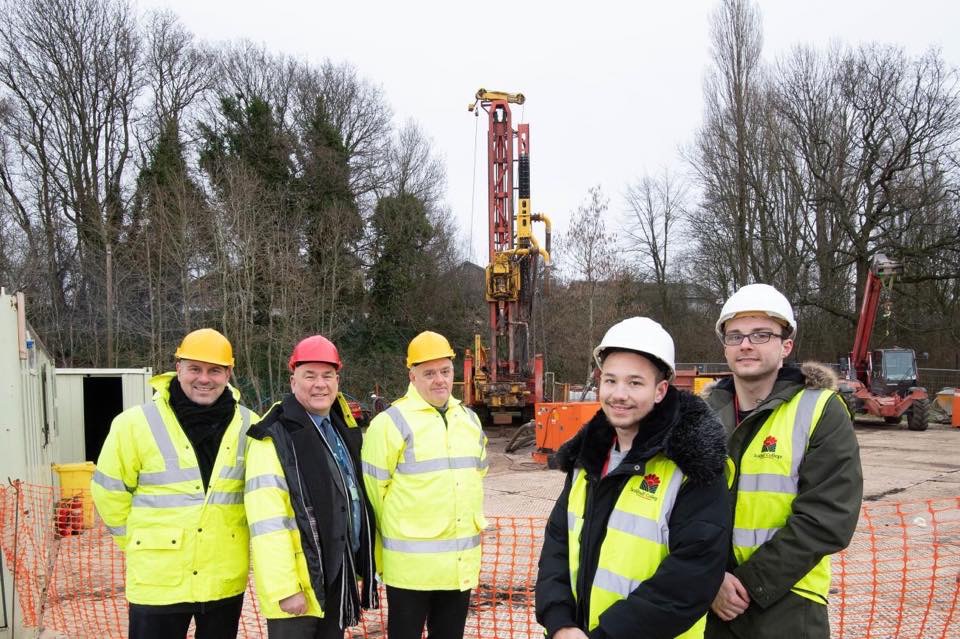Heat Network test borehole currently being drilled in Tudor Grange Park

Visitors to Tudor Grange Park may have noticed the recent appearance of a 10 metre drilling rig. The temporary installation is part of the first stage in Solihull Council’s plans to bring low-carbon heat to town centre buildings.
A test borehole is being drilled to see what groundwater flows may be available from the water-bearing rock (aquifer) beneath Tudor Grange Park. If sufficient water flow is available, Solihull Council said it hopes to utilise this low carbon heat energy in an energy network.
The network could provide heat and power to public buildings and private sector customers.
One local organisation interested in finding out about the potential benefits of this project is nearby Solihull College and University. Students at the College have already been down to see the site and learn more about the science and engineering behind the project and borehole drilling process. Construction & Built Environment students Luke and Ty visited the rig with their lecturer Hugh McLelland.
First year construction student Luke Mooney said: “It was really interesting to learn more about the technical process. One of the modules we cover on our course is alternative energies and we have been looking at the role of heat networks.
“Funnily enough we are just about to cover the borehole process so having an opportunity to come and see it in action right here on our doorstep is great. It would be amazing if our college could be one of the first buildings to benefit from this project.”
Cabinet member for Environment and housing Cllr Tony Dicicco, who has championed the project said: “As a Council we are committed to working towards a low carbon future. Innovative projects like this are going to be the key to delivering on this and I am really excited about the potential benefits it could bring.
“Obviously we are still in the very early stages of the project and the first step will be establishing whether we have sufficient ground source energy at this location. I hope the test borehole will show that we do. The overall aim is to provide cheaper, more sustainable energy, while at the same time reducing carbon emissions.”
All of the funding for the study and investigations, including the test borehole, has come from the Department for Business Energy and Industrial strategy’s (BEIS) Heat Network delivery unit (HNDU) and the West Midlands Combined Authority.
Matthew Rhodes, Board Member of the Greater Birmingham and Solihull Local Enterprise Partnership and Chair of Energy Capital in the West Midlands, said: “This innovative clean energy project is exactly the kind of investment we want to see in support of our growth ambitions, creating opportunities for skilled local jobs, safe and secure local energy supplies, and supporting efforts to tackle climate change.”
A SMBC spokesperson said: “The testing process is expected to take no longer than 7 weeks and there will be minimal disruption to parking at Tudor Grange Leisure Centre. Residents keen to find out more about this project can do so here: http://www.solihull.gov.uk/Resident/Planning/sustainabledevelopment/GreenerSolihull/heatnetwork or sign up for regular email bulletins by going to the Council website: www.solihull.gov.uk, clicking on the Stay Connected button on the home page and selecting heat networks.”

